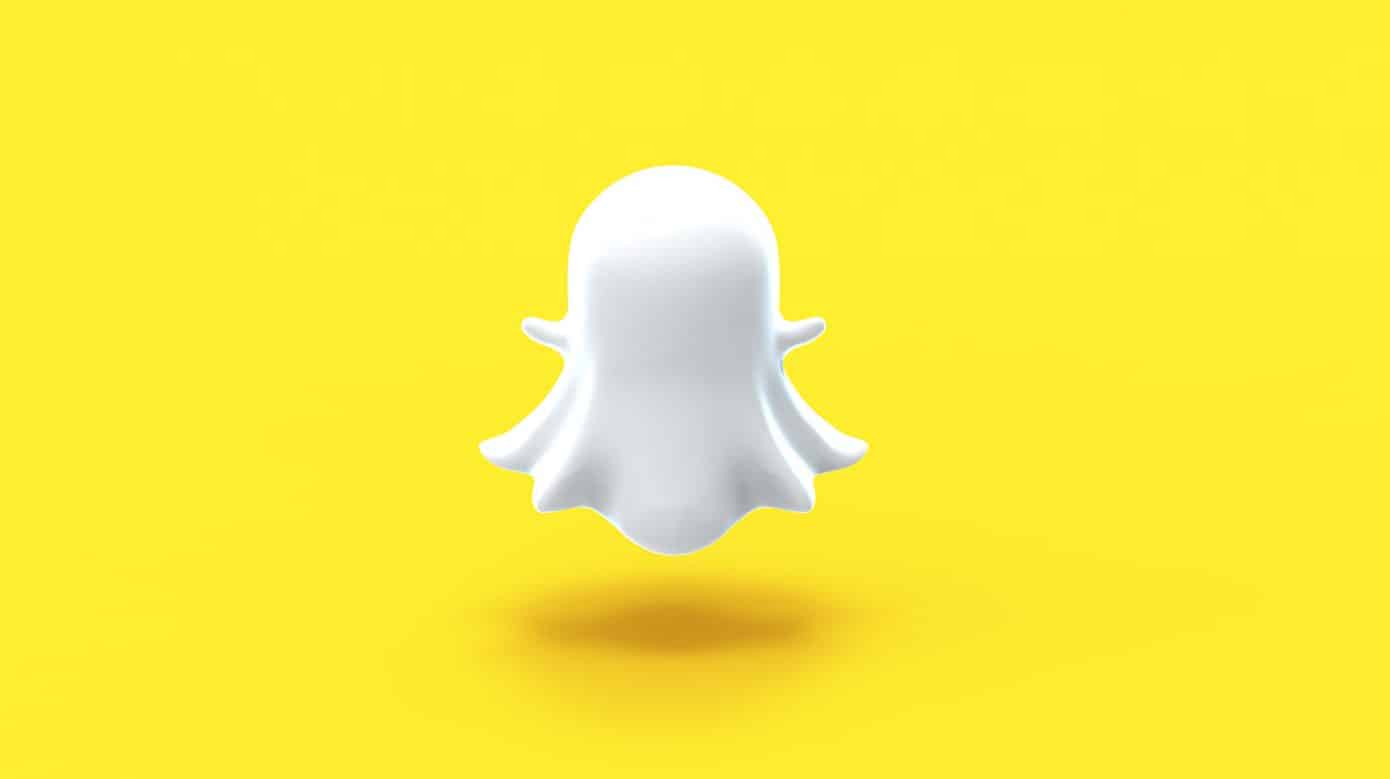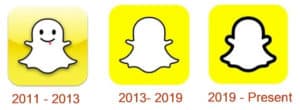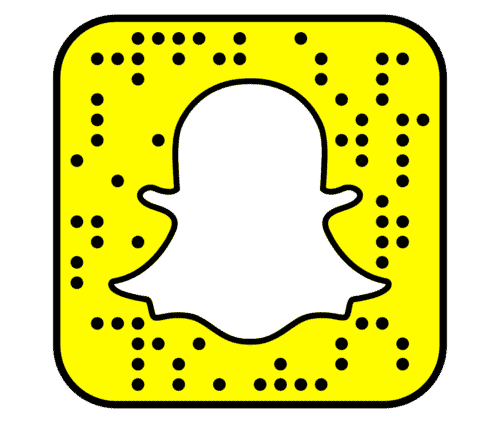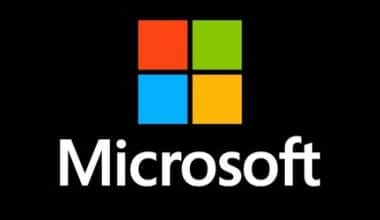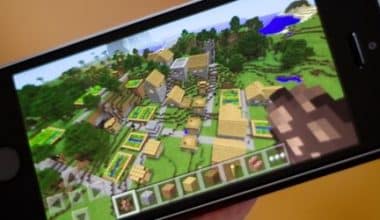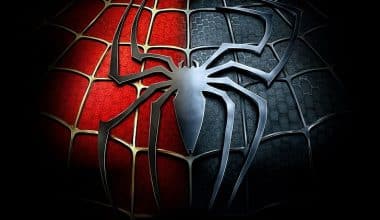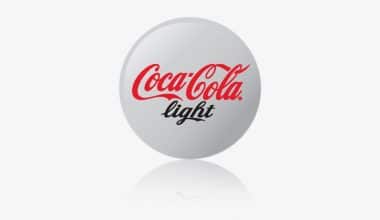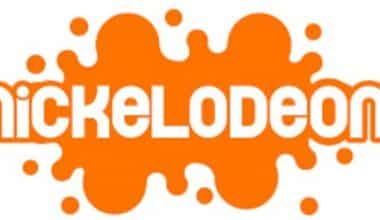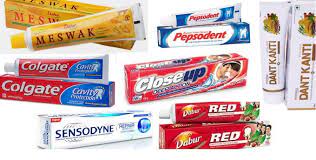Millions of Snapchat users see the Snapchat logo on their phones every day, but only a few are aware of how it came to be. In this post, we’ll go over the fascinating history of the Snapchat logo, as well as how the company got started. Hopefully, this will give you some motivation to start yours and just maybe help you go about branding the right way.
Snapchat is a mobile app created by Evan Spiegel and Bobby Murphy to make photo and video sharing more convenient. It was founded in 2011 and is based on the Picaboo project. As a result, senders can set the duration of viewing videos or photos to anywhere between one and ten seconds; after which the multimedia content is permanently deleted from the recipient’s phone.
The History of Snapchat Logo
The Snapchat iconic ghostly logo, according to Evan Spiegel, was conceived even before the company was founded. Snapchat’s first incarnation was a vanishing image messaging app called “Picaboo,” as the name suggests. It’s unknown whether the logo was inspired by the name or vice-versa.
Spiegel reportedly chose the ghostly picture to signify the transitory nature of the images taken using the app—they’re only seen once and then vanish into thin air before the recipient realizes it; much like the benign ghost that the logo portrays.
Spiegel is said to have designed the logo in just one evening. After looking at several logos from other popular applications to see what would work and what wouldn’t. He realized that all logos shared one trait, regardless of the app. None of them were depicted in yellow. As a result, he believed there was no better hue to employ in his own design.
He produced the final design on his computer after choosing the white and cheerful yellow tone, giving birth to an iconic emblem in the process. Several of Picaboo’s features were replaced when Snapchat took over in 2011, and the focus shifted from branding to technicality and usability. However, one thing remained: the phantom-like design.
Evolution of Snapchat Logo
The app wasn’t always known as Snapchat. It was called “Picaboo,” which also alluded to a vanishing image. Several sources claim that when the word is broken down into logical chunks, the result is “Pic a Boo.” “Pic a Boo” translates to “Photo of a Ghost” in Spanish. That’s how “Picaboo” and then Snapchat were born.
Snapchat CEO and co-founder Evan Spiegel allegedly named the logo Ghostface Chilian in honor of Ghostface Killah, a gangster rap group member of the Wu-Tang Clan. The moniker comes as no surprise, given that Spiegel is a die-hard rap fan and musician.
2011-2013
Snapchat’s first logo was a grinning ghost with a round head, protruding tongue, an uneven base, and two short arms, similar to the Picaboo image. It has the appearance of a conventional Halloween sheet costume.
Snapchat co-founder Evan Spiegel claimed to have drawn the logo on his computer in his bedroom. The now-famous ghost-shaped figure took him only one evening to design. He studied the logos of a number of popular programs in order to discover the best color scheme. Because none of them utilized yellow, Spiegel chose to stick with it.
2013-2019
In the updated edition, the ghost has no face. According to Snapchat’s creators, this implies that each user is a symbol of the app. Skeptics, on the other hand, believe the emblem was altered for entirely unrelated reasons.
According to them, the graphic indication was changed when one of Picaboo’s designers filed a complaint stating that Snapchat had infringed on his copyright.
2019-Present
A ton of Snapchat users will remember 2019 as the year of the most controversial logo makeover. The designers thickened and darkened the ghost’s outline. And because the corporation didn’t reveal the revisions this resulted in a deluge of criticism. Users were surprised to find a new version of Snapchat in the iPhone App Store with a unique symbol and bug improvements.
This was supposed to go unseen, but Snapchat users saw the image right away. They began posting complaints, petitions, and negative reviews on the iOS app store. Most consumers erased Snapchat from their phones because of the obnoxious logo, in their opinion. Snapchat officials responded by claiming that the large border makes the ghost logo more appealing and noticeable.
Elements of the Snapchat Logo Design
According to several online sources, the Ghostface Chilian insignia was inspired by the Snapchat icon Picaboo. and like we earlier mentioned, Picaboo can be divided into logical portions to form “Pic a Boo,” which translates to “a photo of a ghost in Spanish.”
Snapchat logo designers originally integrated the concept of “fading shots” using a cartoon illustration. It’s crucial to note that the multimedia content isn’t fully removed from the program; it’s saved in memory, but you can no longer access it. If you don’t see anything, it doesn’t imply it isn’t there, according to the ghost logo.
Colors in the Snapchat logo:
A yellow square with rounded corners holds a white ghost image with a thick black outline. The logo had a gradient backdrop with three-dimensional illumination and shading in the beginning. Then it became brilliant and consistent. The Snapchat logo designers chose the Pantone Yellow U color after looking at the logos of a number of competitors.
The current Snapchat logo, however, has a somewhat different yellow tone. It’s more vibrant; almost acidic. There was also a little red spot in the previous design (depicting the ghost showing its tongue).
Snapchat Logo Font:
Like you may have observed, it is a recent trend for businesses to exclude names from commercial logotypes. They literally focus more on symbols. This is because most users, it is assumed, do not require a wordmark to recognize whose app the logo belongs to.
Snapchat’s Meaning and History
Snapchat is a one-to-one and group messaging tool that allows users to send multimedia messages that vanish in seconds. By 2016, the app had been downloaded by 150 million people per day, consuming 800 video hours each second. That’s the equivalent of watching all 13 episodes of “Game of Thrones” every second.
Snapchat features Stories (video or picture messages that users can replay for 24 hours), stickers to embellish messages, and Memories in addition to messaging (saved pictures for sharing later on).
Snapchat is widely used, especially among teenagers and young adults. According to a poll, the app was used by 26% of those aged 12 to 24, with Facebook being the most popular app.
Now that you’re familiar with Snapchat, let’s take a look at its roots, some of its big accomplishments and milestones throughout the years, and what the future holds for this social media behemoth.
Snapchat’s History
Snapchat began in 2011 when a couple of Stanford University students had the brilliant idea of creating an app that allows individuals to exchange ephemeral photos without having the same images stored in the cloud permanently.
The concept of “my eyes only” took off like wildfire, effectively putting an end to many social network users’ concerns about their personal data being held indefinitely by sites like Facebook. More than 1 billion pictures have been shared via the app’s iOS Store just over a year after its launch in November 2012, the equivalent of about 20 million photos every day.
Sometime later, an Android app was created, as were several changes that eventually allowed users to share “Stories” within a 24-hour window. By the end of the year, Snapchat had become the sixth most downloaded app of the decade, making its creators, Bobby Murphy and Evan Spiegel, billionaires.
Read Also: NETFLIX LOGO: Evoluion & Tips on Digital Branding
Snapchat Video Launches in 2012
After a year in operation, the company upped the stakes and increased user numbers by introducing video to the Snapchat app, which had only recently been released in the Google Play Store for Android. Despite being only 10 seconds long, the shorts were highly welcomed, and the debut was a huge success, with 50 million shared “snaps” per day.
The company launched two new features in 2013: “Chat” and “Stories.” The app’s conversation function helped it climb the social networking ladder. The function, which was released in May 2014, allows participants to converse face to face in a chat window via a live chat.
Snapchat users could publish a series of snapshots that would be accessible and active for 24 hours using the story function. Snapchat also launched “Our Story,” a new type of story feature that allows Snapchat users all over the world to share videos and photographs from concerts, political rallies, baseball games, and other public events.
Snap had added Geofilters before the end of 2013, a feature that allowed users to customize their material and specify their location when sharing.
Snapchat increased in popularity in 2014. Snapcash was released in December, allowing users on the app to transfer and accept cash from other users and have it quickly placed into their account. Snapchat also entered the financial arena with Community Geofilters in the same month. Customers could either develop their own Geofilters or purchase branded filters as a result of this.
By 2015, 75 million people were using Snapchat on a monthly basis. Advertisements were now widely available on the internet, providing Snapchat with a significant cash stream. Indeed, according to Snapchat’s financial records, advertising accounted for 99 percent of the company’s overall revenue by 2018.
Despite the fact that video was just introduced three years ago, it remained one of Snapchat’s most popular features, with 6 billion flicks being watched every day.
Soon after, Snapchat formed a parent company, Snap, Inc., and began preparations for a $25 billion initial public offering, which commenced in 2017.
Snapchat Controversies
Snapchat has gone through its own set of growing difficulties.
#1. December 2013 Hack
On December 31, 2013, Snapchat was hacked by an unidentified organization, exposing the personal information of 4.6 million users.
On August 27, 2013, Gibson Security, an Australian security firm, had exposed an API security vulnerability to the company, and on December 25, the source code was made public.
Snapchat announced on December 27 that it had added mitigation features. Despite this, they were hacked by an unidentified organization, which claimed that the mitigating measures posed only “minimal hurdles.”
On a website called SnapchatDB.info, the hackers exposed portions of nearly 4.6 million Snapchat identities and phone numbers. and issued a statement to the renowned technology blog TechCrunch, claiming that their goal was to “raise public awareness… and… put public pressure on Snapchat” to address the flaw. A week after the incident, Snapchat issued an apology.
#2. Federal Trade Commission
The Federal Trade Commission filed a case against Snapchat in 2014, and the company agreed to settle (FTC).
According to the government agency, the corporation overstated to the public the extent to which mobile app graphics and photos could be made to vanish. Snapchat was not punished as part of the agreement, but it did agree to have its claims and policies evaluated by an impartial party for the next 20 years. Snapchat was found to be breaking the law by “misrepresenting the extent to which it preserves the privacy, security, or confidentiality of users’ information,” according to the FTC.
Following the agreement, Snapchat modified its privacy website to state that “messages will not be destroyed within a specific duration.”
Even when Snapchat deletes communication data from their systems, backup copies of that data may exist for a length of time. “If you’ve ever tried to recover lost data after unintentionally erasing a drive or maybe watched an episode of CSI, you might know that with the right tools, it’s occasionally feasible to retrieve data after it has been erased,” the service said in a public blog post.
#3. Windows App
Snapchat launched a crackdown on third-party apps and their users in November 2014. Because Snapchat did not have an official client for Windows Phone, users were affected. However, there were multiple third-party apps available, the most popular of which being 6snap.
Microsoft was obliged to remove 6snap and all other Snapchat third-party apps from the Windows Phone Store in December; nevertheless, Snapchat did not develop an official app for the platform, leaving its users behind.
In 2015, fans signed a petition asking for an official Snapchat app, which received 43,000 signatures, but the corporation still failed to reply and produce a Windows Phone app. Later in 2015, Snapchat was chastised for failing to produce an app for Microsoft’s Universal Windows Platform (UWP).
#4. Lens Incidents
Around September 2015, in Hampton, Georgia, an 18-year-old was using the Snapchat feature “Lens” to film the speed she was driving her Mercedes C230 when she collided with a Mitsubishi Outlander.
Both drivers were hurt in the 107 mph (172 km/h) collision.
The Outlander’s driver endured five weeks in intensive care after suffering a severe traumatic brain injury. The Outlander driver sued both Snapchat and the user of Snapchat in April 2016, arguing that Snapchat was negligent because it knew its software was being used in illegal speed contests but did nothing to stop it.
A similar crash occurred in Tampa, Florida, in October 2016, while driving at 115 mph (185 km/h), killing five people.
#5. “Poor Country” Remark
According to a lawsuit filed against Snap Inc. by former Snapchat employee Anthony Pompliano, Spiegel stated in 2015 that Snapchat is “primarily for rich people” and that he does not “intend to go into poor nations like India and Spain.”
The event created a Twitter trend called “#UninstallSnapchat,” in which Indian users deleted the app, as well as reactions against the corporation in the form of negative “one-star” reviews for the app on Google Play Store and Apple’s App Store.
Snapchat’s stock dropped by 1.5 percent. Snapchat responded by calling Pompliano’s allegations “false.” “Obviously Snapchat is for everyone,” he added, calling it “nonsense.” It can be downloaded for free anywhere in the world.”
#6. Pompliano Lawsuit
Former Snapchat employee Anthony Pompliano filed a state complaint in January 2017 accusing the company of doctoring growth numbers in order to deceive investors.
CEO Evan Spiegel dismissed Pompliano’s warnings, who was sacked shortly after. Pompliano’s claims that Snapchat was retaliating against him by violating the Dodd-Frank and Consumer Protection Acts were dismissed by the judge, citing an arbitration clause in his contract.
Snap Inc., on the other hand, received backlash for failing to disclose the basis of the case, leading to a drop in stock prices, several class-action lawsuits, and federal investigations.
#7. “Snap Map” Privacy Concerns
Concerns about privacy and safety were raised when “Snap Map,” a function that broadcasts the user’s location on a map, was released in June 2017. The feature, which requires an opt-in, sends a message to the user asking if they want to show their location on the map, but it reportedly does not explain the consequences of doing so, such as the fact that the app updates the user’s location on the map every time the app is opened, not just when actively capturing snaps, potentially aiding stalkers.
Zooming in on the map reveals more detailed geographic information, such as street addresses.
The Daily Telegraph stated that police agencies had issued child safety warnings, while other media outlets noted that teenagers and adults who were uninformed of the feature’s actual behavior were also concerned.
“The safety of our community is incredibly important to us,” a Snapchat spokesman told The Verge, “and we want to make sure that all Snapchatters, parents, and educators have correct information about how the Snap Map works.”
Users can choose to use “Ghost Mode” or choose which friends they want to share their whereabouts with. Despite an increase in advertising on Snapchat, the company has claimed that it does not intend to broadcast adverts on Snap Map stories.
#8. Rihanna Controversy
“Would you rather punch Chris Brown or slap Rihanna?” was the question in a poll concerning Rihanna that was released in March 2018.
Rihanna asked individuals to remove Snapchat because it was “insensitive to domestic violence victims.”
#9. Body Image Issues
Body dysmorphic disorder has been linked to the rising usage of body and facial reshaping apps like Snapchat and Facetune. In August 2018, Boston Medical Center researchers reported in a JAMA Facial Plastic Surgery editorial that they had discovered a phenomenon known as “Snapchat dysmorphia,” in which people desire surgery to look like the edited version of themselves as seen through Snapchat Filters.
#10. Snapchat Employees Abused Data Access to Spy on Users
In May 2019, it was reported that several Snapchat workers spied on users using an internal tool called SnapLion, which was originally created to gather data in response to law enforcement demands.
#11. Mozilla Calls for Public Disclosures Related to the Use of A.I.
Mozilla filed a petition in September 2019 demanding for public disclosures linked to Snapchat’s use of facial emotion recognition technology, citing “vague, wide language” in the app’s privacy policy.
When contacted by Scientific American for comment, Snapchat representatives declined to provide a public statement.
#12. Pornographic Retaliation
The app became a hotspot for the distribution of revenge porn of young girls during the 2020 blackout in France to prevent the spread of COVID-19.
A woman in North Carolina sued Snapchat (together with dating app Tinder and the five men named in the attack) in 2020, alleging that features of the platform allowed her accused rapist and his friends to suppress evidence of the rape.
The suit claims that “because of the ways Snapchat has been designed, constructed, marketed, and maintained, [the woman’s assailants] were able to send these nonconsensual, pornographic photographs and videos of [her] with little to no threat of law enforcement verifying that they did so.
According to the woman, Snap Inc.
“specifically and purposefully designed, constructed, and maintained Snapchat to serve as a secretive and nefarious communications platform that encourages, solicits, and facilitates the creation and dissemination of illicit and non-consensual sexually explicit content…and allowed Snapchat to operate as a safe haven from law enforcement.”
Snapchat in the Future
Short-term messaging is predicted to continue to rise in popularity, and fierce competition between Snapchat and its rival Instagram is expected to continue.
Advertisers are now investing more money in social media marketing than they do in TV and radio advertisements, and it is expected that platforms like Snapchat will continue to develop new ways to provide effective ads for their users.
Last Thoughts
Snapchat and the Snap chat logo, along with Twitter, LinkedIn, Google+, and, of course, the world-conquering Facebook, are presently the top five social media apps in today’s world, with many more being introduced practically daily.
By the end of 2014, Snapchat had 60 million downloads and 30 million users, with more than 40% of 18-year-old Americans using the app on a daily basis. Although the app is a newcomer to the world of mobile social media, its success story is instructive for every aspiring entrepreneur.
What Is the Meaning of Snapchat Logo?
According to several online sources, the Ghostface Chilian insignia was inspired by the Snapchat icon Picaboo. As we earlier mentioned, Picaboo can be divided into logical portions to form “Pic a Boo,” which translates to “a photo of a ghost in Spanish.”
What Are the Elements of the Snapchat Logo?
The basic elements of the Snapchat logo are its ghost icon and bright yellow color.
What Inspired Snapchat Logo?
This idea comes from the iconic hip-hop group Wu-Tang Clan’s Ghostface Killah. Ghostface Chillah’s face is highlighted in black to produce the ghostly form. The white inside represents how Snapchat photographs are simultaneously seen and deleted.
What Is the Snapchat Ghost Name?
The iconic Snapchat ghost is known as Ghostface Chillah. It was inspired by the well-known Wu-Tang member Ghostface Killah. The Ghostface Chillah reflects the ghost policy of the brand.
What Does ✪ Mean on Snapchat?
Snapchat+ users have the option of adding a stylish black star emblem to their display names. This will broadcast to your contacts that you have subscribed to Snapchat+. By default, the Snapchat+ Badge does not appear next to your username.
What Is a High Snap Score?
If your snap score is between 200,000 and 400,000, you are considered to have a fairly high level of popularity.
What Should You Avoid on Snapchat?
Any form of intimidation or harassment is not tolerated. If someone has blocked you, no other means of communication with them will be permitted. Snaps taken in a private area (such as a restroom, bedroom, locker room, or medical institution) without the subject’s permission are not to be shared.
